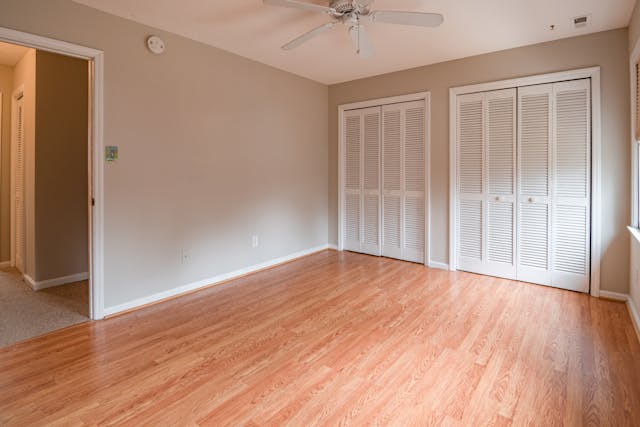
Water damage is one of the most common and costly problems rental property owners face. From leaky roofs to burst pipes, water can quickly cause extensive damage, leading to costly repairs, tenant dissatisfaction, and even potential legal issues. While not all water damage can be completely avoided, taking proactive steps can significantly reduce your risk and keep your property in good condition.
This guide has been prepared by Action Properties, Inc. to provide landlords with practical tips on preventing water damage. By following these steps, you can protect your investment, ensure tenant safety, and avoid unnecessary headaches down the road.
Common Causes of Water Damage in Rental Properties
Leaky Roofs
Over time, roofs can develop weak spots due to age, weather exposure, or poor maintenance. Missing shingles, cracks, and damaged flashing around chimneys or vents can allow water to seep into the property.
Plumbing Failures
Old or poorly maintained plumbing systems are a frequent culprit. Burst pipes, leaking fixtures, and clogged drains can lead to significant water damage, especially if unnoticed for extended periods.
Appliance Malfunctions
Washing machines, dishwashers, and water heaters are common sources of leaks. Worn-out hoses, faulty connections, or rusting tanks can cause water to spill onto floors and seep into other areas.
Poor Drainage
Clogged gutters, downspouts, and improper property grading can lead to water pooling around the foundation. Over time, this can result in basement flooding and structural damage.
Tenant Negligence
Tenants may accidentally cause water damage by failing to report small leaks, leaving water running, or improperly using appliances.

Preventing Water Damage in Your Rental Property
Water damage can come from various sources—inside or outside the property. Whether it’s due to weather conditions, plumbing failures, or tenant negligence, landlords must take a proactive approach. Below are key strategies to help minimize the risk of water damage.
Regular Roof Inspections
A damaged or aging roof is one of the most common sources of water leaks. Schedule professional roof inspections at least once a year, ideally before the rainy or snowy season. Look for:
- Missing, cracked, or curling shingles.
- Signs of sagging or pooling water.
- Damage around chimneys, vents, or skylights.
Address problems quickly to stop water from infiltrating the property. Address small repairs early before they develop into expensive issues.
Maintain Gutters and Downspouts
Clogged gutters and downspouts can cause water to overflow and pool around your property’s foundation, leading to water intrusion and structural damage. Ensure that:
- Gutters are cleaned regularly, especially in the fall when leaves accumulate.
- Downspouts are directed at least 4-6 feet away from the property to channel water away effectively.
- Any damaged or sagging sections are repaired immediately.
Installing gutter guards can reduce the frequency of cleaning and make maintenance easier.

Inspect and Maintain Plumbing Systems
Leaking or burst pipes are a leading cause of water damage in rental properties. Routine maintenance can prevent small issues from escalating.
- Check for visible leaks under sinks, behind appliances, or around toilets.
- Insulate pipes in colder climates to prevent freezing.
- Test the water pressure; excessive pressure can stress plumbing systems.
- Replace old pipes and fixtures prone to corrosion or wear.
Promptly urge tenants to notify you of plumbing concerns and ensure you have a dependable plumber available for urgent situations. A quick response can minimize potential damage and repair costs.
Test Appliances Regularly
Appliances like washing machines, dishwashers, and water heaters are potential sources of water damage. To minimize risk:
- Inspect hoses and connections for wear or cracks.
- Replace rubber hoses with braided stainless steel ones, which are more durable.
- Follow the manufacturer’s maintenance schedule for appliances.
Water heaters, in particular, should be inspected annually to check for leaks, rust, or excessive sediment buildup.
Monitor Basement and Foundation
Basements are especially vulnerable to water damage, whether due to groundwater seepage, heavy rain, or poor drainage.
- Seal cracks in the foundation and walls with waterproof sealants.
- Install a sump pump with a battery backup to handle heavy water intrusion.
- Ensure proper grading around the property so that water slopes away from the foundation.

Using a dehumidifier in the basement can also help control moisture and reduce the risk of mold growth.
Address HVAC Systems
Condensation from HVAC systems can lead to water buildup if not properly managed. Routine HVAC maintenance includes.
- Clearing blocked or clogged drain lines.
- Checking for leaks around air conditioners or heaters.
- Ensuring proper insulation to reduce condensation.
Encourage tenants to change air filters regularly to maintain efficiency and reduce excess moisture.
Install Water Detection Devices
Water sensors and leak detection systems can provide early warnings of leaks or water buildup, allowing you to act quickly. These devices can be placed near:
- Water heaters.
- Under sinks.
- Washing machines or dishwashers.
Advanced systems can even send alerts to your phone, providing an added layer of security.
Educate Tenants
Tenants play a critical role in preventing water damage. Clearly communicate their responsibilities, such as:
- Reporting leaks, clogs, or unusual water spots immediately.
- Avoiding improper disposal of grease or food waste in drains.
- Following guidelines for appliance use, such as not overloading washing machines.
Include these expectations in your lease agreement and provide tenants with an emergency contact list.
Protect Against Severe Weather
Weather events like heavy rain, snow, or hurricanes can increase the risk of water damage. Prepare your rental property by:
- Installing storm shutters or reinforcing windows.
- Checking that the property’s drainage systems are clear.
- Keeping sandbags or temporary barriers on hand for flood-prone areas.
Ensure your property has adequate insurance coverage, including flood insurance if necessary, to mitigate financial losses in case of severe weather events.
Bottom Line
Water damage can cause significant financial and operational challenges for landlords, but many risks can be minimized through proactive maintenance and tenant education. Regular inspections, timely repairs, and preventive measures are key to protecting your rental property from water damage.
At Action Properties, Inc., we understand how critical it is for landlords to maintain their investments while keeping tenants satisfied. If you’re looking for professional support to safeguard your rental property, contact Action Properties, Inc. today. Allow us to handle the complexities of property management so you can relax with confidence. Call us at (650) 967-8700 to learn more.